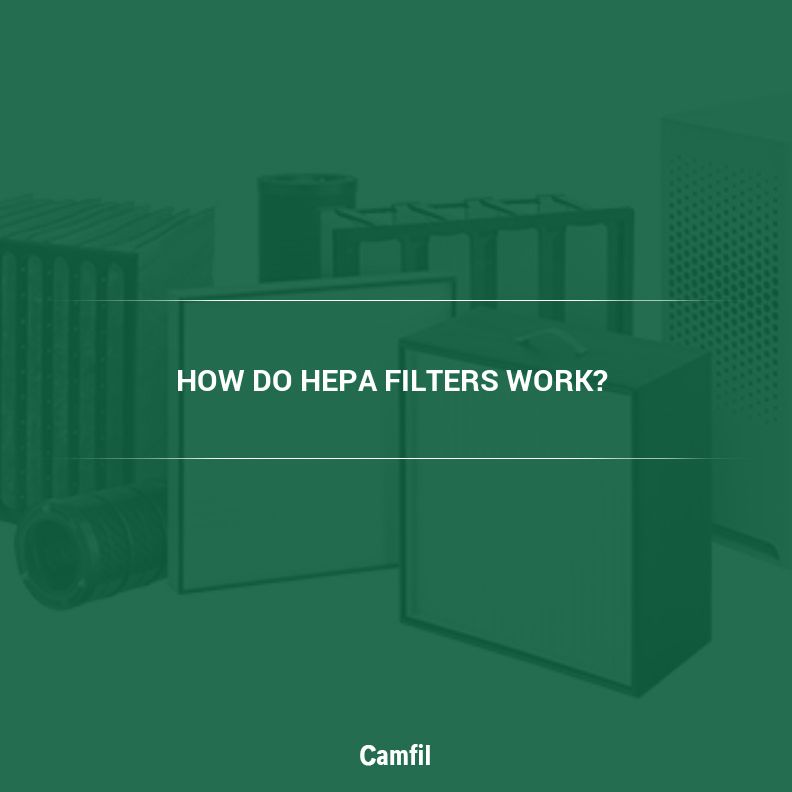HEPA air filters and devices that use them have become a hot commodity since 2020, but HEPA filters have been around since the early 1950s.
HEPA filters are used in a variety of highly sensitive applications, such as preventing airborne contamination in hospitals and healthcare facilities and protecting equipment from particulate matter in cleanroom facilities. HEPA filters are also being used in offices, classrooms, and homes to improve air quality by removing particulate pollutants, pollen, pet dander, and other airborne contaminants, as well as to lessen the spread of COVID-19.
What Is a HEPA Filter?
As explained by the EPA (Environmental Protection Agency),
“HEPA is a type of pleated mechanical air filter. It is an acronym for ‘high-efficiency particulate air [filter]’ (as officially defined by the U.S. Dept. of Energy). This type of air filter can theoretically remove at least 99.97% of dust, pollen, mold, bacteria, and any airborne particles with a size of 0.3 microns (µm).”
“I would object a little bit with this definition,” says Mark Davidson, Manager of Marketing and Technical Materials for Camfil, USA. “There’s nothing theoretical about it. A HEPA filter is one that has been individually tested according to one of the tmajor global test standards.Many so-called HEPA air filters on the market may not actually provide this level of protection or anything close to it because there is no evidence the filter achieves HEPA-level performance. As a result, many air cleaners and air purifiers that advertise HEPA filters are actually not offering the protection from airborne viruses that consumers paid for when they purchased those devices.”
A tested and certified HEPA filtershould have a label on the filter itself indicating that factory testing has taken place and the results should be provided. Be wary of manufacturers who cannot provide documentation to show that their air filters are actually HEPA filters.
How Do HEPA Filters Work?
HEPA filters are among the most effective particulate matter filters available to buy. HEPA filters trap a much higher percentage of microscopic contaminants than even the highest rated MERV or even the more accurately labeled MERV-A filters.
Related article: What Are MERV Ratings? MERV vs MERV-A Filter Efficiency Ratings Explained
HEPA filters, as noted above, are a type of mechanical air filter, which means their three-dimensional structure of ultra-fine fibers physicallycapture particulate matter. There are no moving parts in a HEPA filter, and they don’t use ionization or UV lights. Global standards differ slightly, but HEPA filters remove at least 99.97% of particulate matter greater than 0.3 micron size from the airstream.. Other standards refer to HEPA filters as ones that are at least 99.95% efficient on MPPS.
What is MPPS? Most Penetrating Particle Size Explained
For one test standard, the definition of HEPA filtration references a specific particle size — 0.3 microns — at which 99.97% of particles are captured.
For context, 0.3 microns is approximately 0.000012 of an inch, which is about 300 times smaller than the diameter of a single strand of human hair.
“Other test standards rely on the “most penetrating particle size,” or MPPS, to determine the performance of a filter” according to Davidson. “This test identifies the size particle which is most likely to penetrate the filter. . In many cases, this size is 0.1 – 0.2 microns which is actually less than 0.3 microns. A HEPA filter carrying the label of H14 is 99.995% efficient on MPPS which means it actually captures particles slightly larger and smaller than MPPS at an even higher rate.”
When purchasing either a HEPA filter for an existing system or an individual room air purifier with a HEPA filter, the most important step is to verify the HEPA filter has been tested, certified and labeled as an actual HEPA filter.
About Camfil Clean Air Solutions
For more than half a century, Camfil has been helping people breathe cleaner air. As a leading manufacturer of premium clean air solutions, we provide commercial and industrial systems for air filtration and air pollution control that improve worker and equipment productivity, minimize energy use, and benefit human health and the environment. We firmly believe that the best solutions for our customers are the best solutions for our planet, too. That’s why every step of the way – from design to delivery and across the product life cycle – we consider the impact of what we do on people and on the world around us. Through a fresh approach to problem-solving, innovative design, precise process control, and a strong customer focus we aim to conserve more, use less and find better ways – so we can all breathe easier.
The Camfil Group is headquartered in Stockholm, Sweden, and has 31 manufacturing sites, six R&D centers, local sales offices in 35+ countries, and about 5,200 employees and growing. We proudly serve and support customers in a wide variety of industries and in communities across the world. To discover how Camfil USA can help you to protect people, processes and the environment, visit us at www.camfil.us/
##
Media Contact:
Lynne Laake
Camfil USA Air Filters
T: 888.599.6620
E: Lynne.Laake@camfil.com
F: Friend Camfil USA on Facebook
T: Follow Camfil USA on Twitter
Y: Watch Camfil Videos on YouTube
L: Follow our LinkedIn Page
https://www.epa.gov/indoor-air-quality-iaq/what-hepa-filter-1
The post HEPA Filters Explained — How Do HEPA Filters Work? appeared first on Air Filters for Clean Air.

